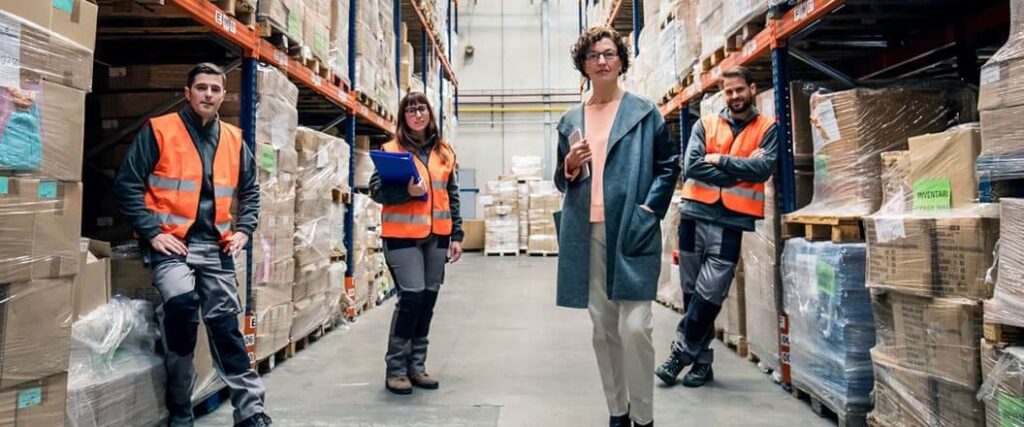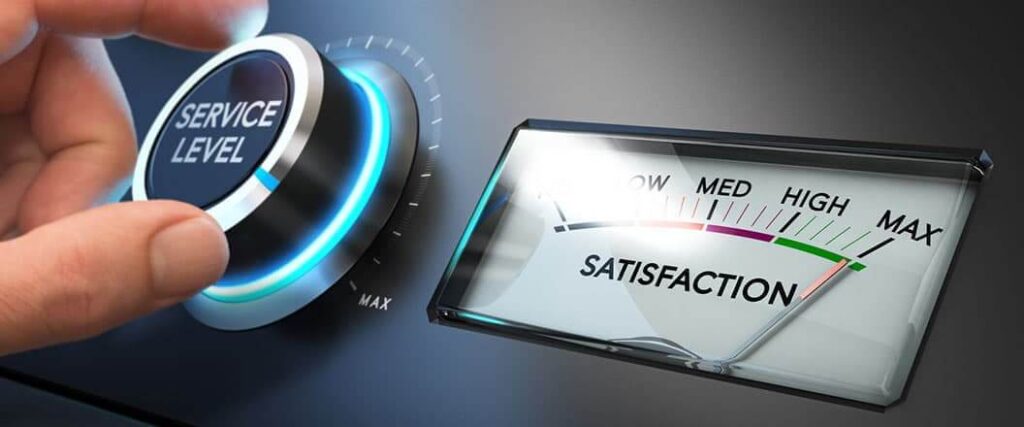
 Copy URL to Clipboard
Copy URL to Clipboard
Retail fulfillment services are the key to a successful business. Because companies have to juggle so many responsibilities, hiring a partner to handle this operation can be an advantage. However, businesses should understand what this entails before they outsource to a third-party logistics (3PL) provider.
According to the Council of Supply Chain Management Professionals, retail fulfillment services are critical operations that handle the storage, packaging, and delivery of products to customers. Outsourcing these services allows businesses to focus on other responsibilities like core operations and scaling their company reach.
We’ll show you the basics on retail fulfillment services and how it can boost your supply chain.
Table of Contents
Retail fulfillment services entail a variety of operations that let businesses store and ship their products. Companies can either keep their goods in a facility they own or hire a 3PL to hold onto their goods. Retailers can ship their products from a warehouse to one of their stores or directly to a customer.

Retail order fulfillment consists of various operations that ensures buyers receive their orders correctly and on time. Each part of these services requires careful focus and planning.
Retail fulfillment operations entail the following:
Many businesses opt to hire 3PLs for retail order fulfillment services, while others conduct these operations in house.
Read our article on 3PL solutions for retailers if you want to outsource these operations.
Storage and inventory management are foundational to any successful retail order fulfillment process. Product storage keeps goods organized in a secure location. Storage facilities or warehouses are where the retailer's items are placed.
These buildings are designed to keep products:
Warehouses can be small or large, sprawling facilities. Inventory management is used to track all products a retailer has in one of these large buildings. A company can also determine what items are selling well and which ones are going unnoticed.
Storage and inventory management businesses ensure that when a customer places an order, the item is in stock and ready to be shipped. Virtually all 3PLs have retail fulfillment centers where freight is kept. They also use inventory tracking technology that lets them keep tabs on product levels for the businesses that hired them.
The receipt and inspection of goods are critical steps in retail fulfillment. This part of the service ensures the products that arrive at a distribution center are the correct items and are high quality.
These operations are completed in the following steps:
Upon arrival, the shipment is checked to confirm that all items are present as per the purchase order.
This involves verifying:
Quality inspection involves a thorough check of the items to ensure there are no visible defects or damage that occurred during transportation. Functional reviews are needed depending on the type of goods. This is done to test products to ensure they work properly.
Once the goods have been received and inspected, inventory levels are updated. This ensures that businesses always know how many products they have left in storage. After these steps are completed, the items can be sent to the customer.
Another aspect of retail fulfillment services is inventory organization. While this might sound similar to inventory management, it’s actually a unique operation. Arranging products is a critical part of retail stock and fulfillment.
Inventory organization consists of the following:
Retail fulfillment services use categories to systematically arrange products. This can be based on the characteristics of an item, such as:
The key is to create a logical and intuitive system that allows for fast and accurate picking and packing of orders. Location coding is the second aspect of this retail fulfillment solution. Each shelf or bin inside a warehouse is assigned a unique code, making it easier to locate specific products for orders.
Products have a unique SKU code that makes it easier to track individual items inside a warehouse accurately.
This facilitates better:
Order of storage is another practice that’s used for inventory organization. It involves storing products based on their demand or the frequency they’re purchased. Items with high turnover are usually stored in easily accessible areas to speed up the fulfillment process.
Safety and efficiency is the final aspect of inventory organization. This practice is carried out by placing heavy and large items on lower shelves or floor areas. Using safety and efficiency techniques minimizes the risk of accidents and improves picking efficiency.
The next part of retail fulfillment services that businesses should understand is order processing. When an item has been bought by a customer, the products have to be prepared.
Order processing does this by:
The details of an order are reviewed to verify the availability of the items in inventory and validate the shipping information provided by the customer. Once the purchase is reviewed, the picking process begins.
This involves locating the ordered goods in the warehouse and collecting them for packing. Packaging may vary based on the nature of the products that are shipped. Finally, the items are labeled with the customer's shipping information and set aside for pickup.
Shipping and logistics fulfillment for retailers is extremely important. This business operation is used to transport goods to customers and storefronts in a timely manner.
To have an effective shipping and logistics program, companies should consider the following:
A business will need to pick a carrier based on the needs of their freight.
This includes:
After considering these factors, the shipper selects an appropriate carrier. The transportation method refers to the type of delivery service used. Different carriers offer a variety of options at various price points.
This includes:
There are many carriers that can also transport freight in bulk. To do this, shippers have to palletize their packages before making their shipment available for pickup. Companies can choose which option is best for them prior to placing an order.
Once the goods are shipped, tracking information is generated. This allows retailers to follow their load as it travels to one of their stores. Customers who placed an order will be given tracking information as well.
The final step is the delivery of the packages or palletized freight. In some cases, the final destination could be a retailer’s storefront. Freight can also be sent to a location specified by a customer.
Inventory control helps retailers maintain the right amount of stock in a warehouse to meet customer demand. This ensures that companies never have too much or too little of the products they sell.
Inventory control consists of the following:
Constant monitoring of stock levels ensures that all products are available for order fulfillment. Setting up reorder points prevents retailers from running out of certain products. When item levels reach this level, businesses will know they need to replace those particular goods.
Inventory turnover rate shows how much of a certain product is sold or used in a given period. Goods that are purchased frequently indicate robust sales and efficient item management. Therefore, retailers will know to keep these products in their inventory. Goods that have a lower inventory turnover rate indicate they’re less popular with customers.
Safety stock is a technique that businesses use to keep a surplus of products in case of unexpected delays in delivery or sudden spikes in demand. Retailers typically apply this inventory control method to goods that are bought more frequently.
Retailers and 3PLs use different kinds of technology to perform fulfillment services. These systems are used for different operations like inventory organization and control. Businesses that perform their own retail fulfillment use these resources. Virtually all 3PLs utilize technology when offering their services as well.
Some programs that are used for retail fulfillment services include:
A WMS helps manage inventory in a warehouse in a variety of ways. Some include:
For instance, Amazon uses advanced WMS to maintain its vast inventory and fulfill orders quickly. An OMS handles the lifecycle of a purchase and can manage inventory across multiple channels. It also provides updates to customers and businesses.
Inventory management software helps retailers track their stock levels and sales. It can also be used to follow deliveries and keep tabs on order updates.

Many companies choose to enjoy the benefits of a 3PL for retail order fulfillment. Businesses have many responsibilities that can take up time and money. Outsourcing retail fulfillment services can help free up funds and time that can be directed to other areas of running a company.
One benefit of outsourcing retail fulfillment services to a 3PL is that it gives companies the ability to focus on other core operations. This includes creating and selling products or improving customer service.
With logistics operations off their plate, businesses also have more time to strategize and plan for the future.
This could involve:
These are just a few of the ways outsourcing retail order fulfillment to a 3PL can help businesses focus their efforts on other aspects of their operations.
As a retailer grows, their fulfillment services must grow with it. Outsourcing this operation to a 3PL can help. Retailers will reach more customers the larger they become. Most 3PLs can offer their services anywhere in the country. This will give businesses the ability to expand their supply chain.
Retailers must also be able to adapt to fluctuations in their respective market.
Some changes can include:
Regardless of what the change is, 3PLs can adapt quickly. They can increase operations as demand rises and slow back down when the market returns to normal.
While retailers have to pay 3PLs to handle their fulfillment service, doing so is much cheaper than spending money to perform this operation in-house.
Outsourcing means retailers don't need to invest heavily in the following:
Using a 3PL allows companies to avoid these costly expenses. Outsourcing retail fulfillment solutions is also less risky. Hiring experts to handle supply chain operations will help businesses avoid mistakes.
Additionally, many 3PLs can provide flexible pricing. The amount they charge will change based on the volume of goods handled. This makes outsourced retail fulfillment services much cheaper for businesses. To show how expensive it is to outsource these operations to a 3PL, we’ve included some important data.
| Fulfillment Service | Cost |
| Inventory Receiving | $20-$50 per hour (or $5–$15 per pallet) |
| Storage | $5-$40 per pallet monthly |
| Pick and Pack | $3-$5 per order |
Provided Fit Small Business
While there are many services a 3PL can provide, these are some of the primary ones that businesses will likely use. The costs for each are a much cheaper alternative for retailers than investing in an entire in-house fulfillment system.
Fulfillment and Distribution can help with your various retail services. Our company has numerous supply chain experts that can handle your logistics operations for you. We also have warehouses throughout the U.S. that can provide a variety of services.
Some include:
If you’re ready to hand over your retail fulfillment services to a company with the expertise you require, then fill out your quote today. Our team is also available at (866) 989-3082 if you have any questions or concerns.
